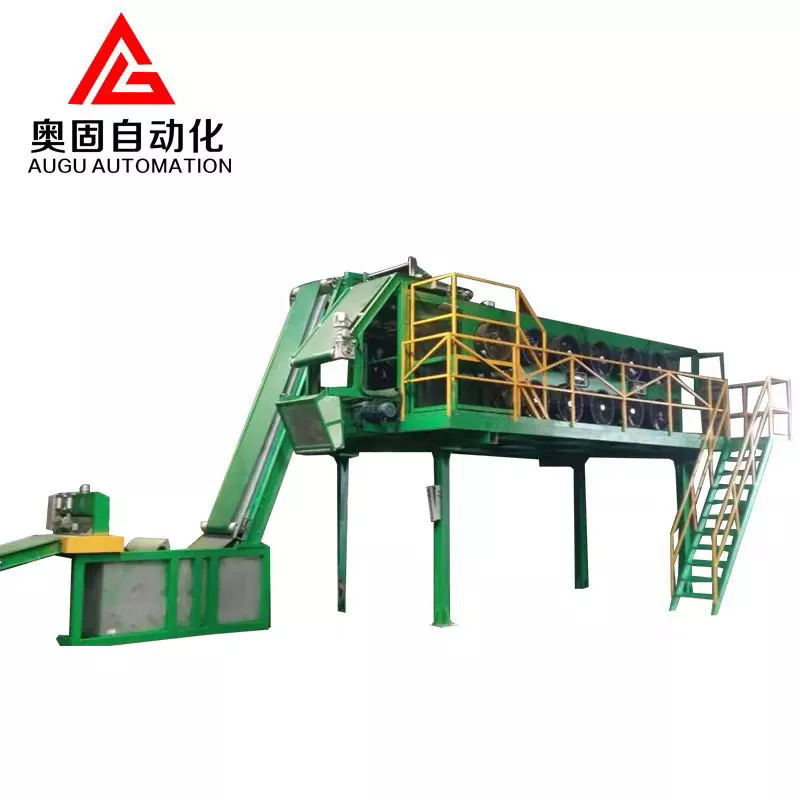What is the Rubber Mixing Process and Why is it Important?
2024-11-21
The rubber mixing process is a crucial step in the production of rubber products, influencing their performance, durability, and overall quality. Whether it's for tires, seals, gaskets, or footwear, the rubber mixing process helps ensure that the rubber meets the specific requirements for each application. But what exactly is this process, and why does it play such a vital role in manufacturing?
What is Rubber Mixing?
Rubber mixing refers to the process of combining raw rubber with various additives, chemicals, and other materials to form a homogenous mixture. This mixture, known as a rubber compound, is used as the starting material for the production of rubber products. The primary goal of mixing is to ensure that all ingredients are evenly distributed throughout the rubber, resulting in the desired properties such as strength, flexibility, and resistance to wear.
The Ingredients Involved
A rubber compound typically consists of the following ingredients:
1. Natural or Synthetic Rubber: The base material that gives the rubber its primary properties, such as elasticity.
2. Carbon Black: Used to reinforce the rubber and improve its strength and wear resistance.
3. Processing Oils: These oils help in the processing of the rubber and improve the mixing properties.
4. Vulcanizing Agents: These chemicals initiate the vulcanization (or curing) process, which cross-links the rubber molecules, improving the material's resilience and elasticity.
5. Additives: Various other chemicals, including antioxidants, plasticizers, and curing agents, are added to achieve specific performance characteristics.
How is Rubber Mixed?
The rubber mixing process typically involves two main steps: pre-mixing and final mixing.
1. Pre-Mixing:
In the pre-mixing stage, raw rubber is softened and prepared for the addition of other materials. This is often done using an internal mixer, such as a Banbury mixer, which applies heat and mechanical shear to the rubber. At this point, the rubber is not yet fully mixed with the additives but is softened to make the next stage of mixing more efficient.
2. Final Mixing:
After the initial softening, the rubber is then transferred to an open mill or another type of mixer, where the remaining ingredients are added. The goal is to mix the rubber compound to a uniform consistency, ensuring that the carbon black, vulcanizing agents, and other chemicals are evenly dispersed throughout the rubber. The rubber compound is continuously rolled and blended to prevent air pockets and ensure an even distribution of all components.
Why is the Rubber Mixing Process Important?
The rubber mixing process directly impacts the performance and quality of the final product. Here are a few reasons why it is so crucial:
1. Uniformity: A properly mixed rubber compound ensures that all parts of the product have consistent strength and flexibility. This uniformity is essential for products like tires, where uneven distribution can lead to premature wear or failure.
2. Optimal Properties: The precise combination of ingredients during the mixing process ensures that the rubber has the right properties for its intended use, whether it's heat resistance, elasticity, or durability. For example, rubber used in automotive tires needs to be strong and durable, while rubber used in seals needs to be flexible and resistant to wear.
3. Cost Efficiency: Proper mixing can also help reduce waste and lower production costs. By ensuring that the rubber compound is mixed correctly the first time, manufacturers can avoid the need for rework or waste due to improper blending.
4. Product Durability: The right mix of additives, chemicals, and vulcanizing agents ensures that the rubber has long-lasting durability, which is particularly important for products exposed to harsh conditions, like outdoor equipment or vehicle parts.
Conclusion
The rubber mixing process is far from simple—it requires careful attention to detail and a precise combination of ingredients. By understanding the importance of this process, manufacturers can create rubber products that meet the highest standards of performance and quality. From tires to industrial seals, the rubber mixing process ensures that the final products perform as expected and stand the test of time.



